Bruce Dowbiggin
Connor, Johnny, Auston: You’ve Got To Have Hart
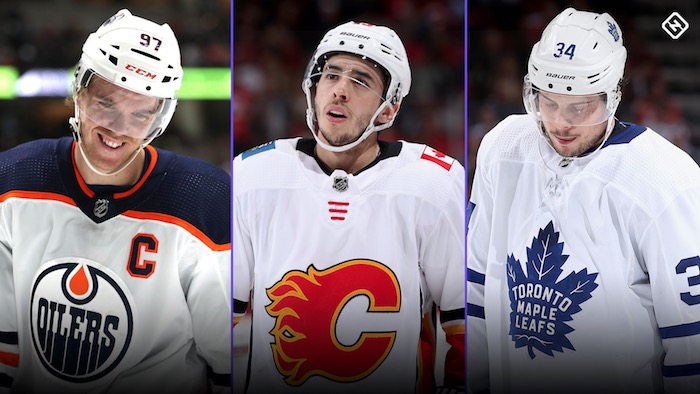
Among the slimmest volumes of the past 30 years is Great Canadian NHL Champions. As most suffering fans of the seven Canadian-based NHL teams know, no Canadian club has won a Stanley Cup since 1993.
Just five teams have even gotten to the Final: Vancouver (1994/ 2011), Calgary (2004), Ottawa (2006), Edmonton (2007) and Montreal (2021). They all lost. (You can make a point that the transplanted Quebec Nordiques won the Cup in Colorado in 1996 and 2001, but it’s a lame argument.)
As the 2022 postseason begins, however, there are two bonafide contenders— Toronto/ Calgary— to win the Cup and a third— Edmonton— with a puncher’s chance. Of course. these dreams can collapse for any number of reasons. In 2004 and 2011, the Flames and Canucks simply ran out of healthy bodies. As we wrote in an earlier column, goaltending can also trip up a team.
What’s just as interesting as the Canadian Cup chase will be the contest for the Hart Trophy as the most valuable player to his team. In the years since Patrick Roy led the Habs to the 1993 championship, going 10-0 in OT games, there has not been a year with a trio of Canadian-based players like this.
Toronto’s Auston Matthews. Edmonton’s Connor McDavid. Calgary’s Johnny Gaudreau.. (Ironically two of three are Americans on Canadian teams.) They’re key reasons why their teams have a chance at the Cup.
The Toronto media has— surprise— already anointed Maple Leafs captain Matthews as the putative winner. And Lord knows what the Toronto media decides instantly becomes gospel. Matthews has no doubt had a remarkable year, and deserves a lot of credit. Bookies love him too at an inflated -345.
Besides being the star of the team in the largest Canadian market, Matthews’ claim rests largely on being the top goal scorer in the NHL. His 58 goals in 71 games (all totals through 25/04) are just three more than his nearest competitor (Leon Draisaitl). He did manage a historic 51 of his goals in a 50-game span. But pure goal scoring is the only significant stat in which Matthews leads: his nine game-winning goals trail Draisaitl by two. And his 15 power-play goals trail Draisaitl by nine.
Matthews also trails McDavid, the NHL’s leading scorer, by 14 points, albeit with six fewer games played. Gaudreau leads him overall by 11 points. Gaudreau, meanwhile, currently sits third in league scoring behind McDavid and Florida’s Jonathan Huberdeau; he stakes his claim to the Hart based on some extraordinary plus/ minus statistics. With three games to play Gaudreau is a stunning plus-61; only his linemate Matthew Tkachuk is even remotely close at plus-55. McDavid is plus-27. Matthews an ordinary plus-18.
He not only scored but his line kept opponents from scoring. Okay, generic plus/ minus can be overrated. But there is real value in Gaudreau’s leading his challengers with 86 even-strength points. (This from a player Flames fans wanted traded a year ago). McDavid and Matthews are tied at 76.

While Matthews’ has 15 PPG, McDavid’s has 9 PPG followed by Gaudreau has a modest 6 PPG. Gaudreau has managed these numbers while playing less than his rivals. His ice time is just 18:28. Matthews logs 20:33. McDavid plays a whopping 22:08 per game.

McDavid may have been the best player in the NHL the past half-decade (he’s won two Harts already), but his team has held him back come playoff time. This year he and Draisaitl have grabbed the underachieving Oilers by the scruff and made a late surge to a playoff spot.
All three could end up watching Huberdeau, a Canadian playing on an American team, carry off the Hart— especially if Canadian voters split the vote. The Florida Panthers star is second in scoring and leads the league in assists and may be the best playmaker on the runaway Eastern Conference leaders.
Who to bet on? Matthews is the favourite at -345 to win his first Hart Trophy. At +400, two-time winner Connor McDavid is the second favourite. Gaudreau is closing the gap, now at +1600. Remember that voting is due before the playoffs, so a bad postseason cannot hurt a Hart contender nor can it help a dark horse. Our vote in a narrow contest goes to Gaudreau.
**************************************
The sad passing of Guy Lafleur this week brought forth many memories of his greatness as a player. But as we noted in Inexact Science (brucedowbigginbooks.com) The Flower was considered something of a bust in his first few NHL seasons. After scoring “just” 27 goals in his rookie year, he was overshadowed by No.2 selection Marcel Dionne and No. 5 pick Rick Martin.
(He) may have had one more tally and just seven fewer points than Dionne, but it was the perception that mattered also. And the perception was that Lafleur didn’t match up to his draft “adversary.” Making matters worse was that Buffalo’s number five overall pick, Rick Martin, achieved the heights Lafleur supposedly should have reached in 1971–72 by amassing an NHL rookie record 44 goals—still tied today as the seventh-highest such total in league history… Even though he was the odds-on favourite for Rookie of the Year when training camp had rolled around, Lafleur wasn’t even a finalist for the award. The dashing of these rather lofty expectations naturally begat skepticism of Lafleur’s greatness.
To the exasperation of Habs fans, Lafleur’s closest peers continued to outdo him in every way but in championship rings. Dionne avoided any sophomore jinx by posting 90 and 78 points in the next two campaigns, compared to Lafleur’s 56 and 55, while Martin reeled off 37- and 52-goal campaigns to show his freshman output had been no beginner’s luck. To add insult, even the number 10 pick of 1971, Steve Vickers—debuting for the Rangers in 1972—reeled off back-to-back 30-goal seasons to start off his career. When Lafleur bottomed out with only 21 goals in his third NHL season, 1973–74, there were whispers that maybe he was just a fluke, a flash-in-the-pan who peaked too early, spoiled by the weaker defences of the junior game and perhaps too mentally fragile to handle the immense pressure of being the next supposed legend in Canadiens lore.
The next year Lafleur ditched his tea-pot helmet and embarked on a brilliant career with three Art Ross scoring titles, three Hart Trophies, three Pearson Awards and one Conn Smythe—but he also shared in team success by winning five Stanley Cups and four Prince of Wales Trophies. Adieu, Guy
Bruce Dowbiggin @dowbboy is the editor of Not The Public Broadcaster (http://www.notthepublicbroadcaster.com). The best-selling author was nominated for the BBN Business Book award of 2020 for Personal Account with Tony Comper. A two-time winner of the Gemini Award as Canada’s top television sports broadcaster, he’s also a regular contributor to Sirius XM Canada Talks Ch. 167. His new book with his son Evan Inexact Science: The Six Most Compelling Draft Years In NHL History is now available on http://brucedowbigginbooks.ca/book-personalaccount.aspx
Bruce Dowbiggin
Be Careful What You Wish For In 2026: Mark Carney With A Majority
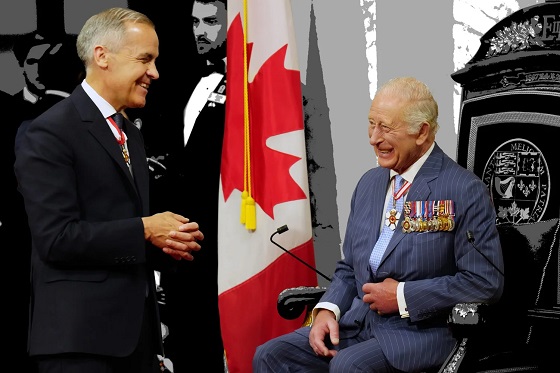
“The unifying theme that enables the Liberal party to maintain its hold over Canada is persistent anti-Americanism…I hope Canadians finally mature, acknowledge that we are neither superior nor inferior to the United States, and abandon our collective national inferiority complex.” Conrad Black quotes a friend.
Canadian media have almost always been reflexively anti-American. Fair enough. Abandoned by Britain they needed to push back. But the real fear of being consumed by the rebel colonies to the south has morphed into a fear of Donald Trump reminding Canada that it has been riding first class while paying economy.
Bashing noisy, bumptious America has always been good business if you owned a Canadian newspaper or television/radio network. The performative worship of Canadian leaders who cocked a snook at the Yankees led, in recent times, to the open-mouthed support for the fatuous Trudeaupian line of monarchs. As Ray Davies sang, “each one a dedicated follower of fashion.”
Since Pierre “The Bold” Trudeau succeeded Lester Pearson and ascended to the throne of the Family Compact in 1968, Canadian policy from Viet Nam to Trump has become “What are the Americans doing? Then let’s do the opposite”. Sample of spite: CBS TV pulled a controversial 60 Minutes news story —but it aired in Canada after being leaked by pissed-off CBS employees.
Yes, there was the brief Harper interregnum when Canada actually fought a military campaign alongside the U.S. in Afghanistan. But mostly it was Jean “Golf Balls” Chretien sitting out the Iraq War.
Alas, all good things must end. Or at least pause. People were starting to notice that Justy was a Chinese trusty, his Montreal riding campaign funded by hundreds of Chinese “businessman” from far away. The tragi-comic Trudeuapian succession hit a speed bump with Mark Carney being brought in to domesticate Canada in manner satisfactory to Brookfield and the EU.

But no one is betting the Libs won’t turn to a third generation of Quebec fashionistas— in the form of another Trudeau progeny— when all else fails.
As usual caustic Conrad Black sums up Canada best. With Quebec and Alberta talking separation he quotes a friend on the state of the nation. “What exists instead is a Liberal Party that manages — often quite poorly — the finances of a collection of provinces and territories, while relying on its media apparatus to shape and safeguard its narrative. It resembles a hedge fund supported by an image consulting firm.” (Insert your convict felon/ anglo wannabe reference here.)
There is no doubt that, as 2025 skulks out, the “image-consulting firm” painting rosy pictures of the Laurentian Elite is in for a a challenge. Justin thought using Trump as his pretext could achieve peace by buying up the lads and lasses of the fourth estate. It worked with Covid and the Truckers Convoy as the column writers/ panel hosts dutifully wrote it like he called it (even as the international press chided Trudeau.).
But even those good times didn’t last, forcing the Libs to do a presto-chango before Justin could lead them to a catastrophic defeat in the spring election. Once more, faced with Trump’s aggressive posture toward trade with Canada, the press closed ranks over Elbows Up, portraying CPC leader Pierre Poilievre as Dick Dastardly.
But new polling shows that the burst of enthusiasm for more Liberal pantomime is wearing thin. The new “new” trade deal promised with Trump has dissipated. The threat to private home ownership in B.C. by government’s indigenous land concessions has sent a chill through the middle class. The NDP fainting goats who bought Elbows Up are headed back to Crazytown, likely under Avi Lewis.
Now, at last, the reckoning promised by the Conservatives’ 20-point lead in polling this time last year may be at hand. While the diehards will go their graves mumbling land acknowledgements and 32 pronouns, there is hope that the under 60s— who emphatically support the Tories— will force change.
What change? Tristan Hopper in the National Post suggests that one place to start reforming the jalopy of Canadian government is in the oceans of money lavished on cause-related political leeches. Seeing the Bondi Beach slaughter by ISIS radicals many now question how long before Toronto or Montreal experiences a similar tragedy at the hands of jihadis who are lavishly supported by tax money.
Yes, not all Muslims in the West are terrorists. But almost all terrorists in the West are Muslim. Hate-spewing Hamas groupies from college faculty are regularly allowed major intersections with police protection as they promise to wipe out infidels. Till now it’s been poor form to even mention, let alone criticize, this pantomime.
Withdrawing financial aid to these groups and their academic fellow travellers would immediately rob these brigands of their impact. The cries of despair from cutting the cord would also expose those in the Commons who have coddled these vipers with grants and ministries.
Similar hacking at the slush money aimed at every other form of leftist posing— from trans to indigenous to illegal immigrants— would also mark the end of free money. Of course there will be caterwauling from the Elizabeth May Free Lunch crew. But with the threat of Canada coming apart with Quebec and Alberta/ Saskatchewan headed for the door those usual dissenting voices will be muted.
Only one thing stands in the way of this culling. That is PM Mark Carney coercing one more MP to cross the floor to his party, cementing its majority status for up to four more years. While the At Issue panels slap their flippers in glee at Poilievre’s demise, the rest of the nation will be less enthralled with the new realities of censorship, trade and housing.

As Stephen Punwasi states. “People in Canada can’t afford homes & prices can’t fall because debt was securitized with widespread fraud—so taxpayers will subsidize foreign speculation. It’s like they hired the mayor of Vancouver to run housing. Oh—they did, eh? Kids, run.”
Bruce Dowbiggin @dowbboy is the editor of Not The Public Broadcaster A two-time winner of the Gemini Award as Canada’s top television sports broadcaster, his 2025 book Deal With It: The Trades That Stunned The NHL And Changed Hockey is now available on Amazon. Inexact Science: The Six Most Compelling Draft Years In NHL History, his previous book with his son Evan, was voted the seventh-best professional hockey book of all time by bookauthority.org . His new poetry collection In Other Words is available via brucedowbigginbooks.ca and on Kindle books at https://www.amazon.ca/dp/1069802700
Bruce Dowbiggin
Hunting Poilievre Covers For Upcoming Demographic Collapse After Boomers

For those not familiar with hunting seasons in Canada it may come as a surprise that the nation has a year-round hunting season. That would be the targeting of Conservative leader Pierre Poilievre by the massed army of Liberals, their bots and the richly endowed media pack. Forget he’s never held power. He’s to blame for the ills in Canadian society.
It has been a good hunt. After floor-crossing by dissident CPC, the Liberals are one seat from the majority that Canadian voters denied them in the spring. (They’ll likely get the majority soon.) MPs who a day earlier were at Conservative Xmas parties suddenly sang the praises of Carney. MPs in ridings targeted by the Chinese suddenly joined Team Elbow Up.
All the while the media corps landed blows from their perch. Robert Benzie: “I know that Premier [Danielle] Smith is very unhappy privately with Pierre Poilievre because she thinks that [MOU motion] is undermining this [pipeline] project.” The nadir of the media dog pile was formerly eminent scribe Robert Fife who sniped, “Conservatives persist with cute legislative tricks, while the government tries to run a country.” Run a country. That’s rich.
From his lips to Liberal brains, however. “.@CBCNews and @AlJazeeraWorld viewers consider themselves uniquely informed, says @ElectionsCan_E report. The two TV networks were named by self-described “informed” voters when asked where they got their news. “
It is, seemingly, a great time to be a Liberal. Or not. While Operation Poilievre was gathering steam for Xmas polling revealed that Liberals and Conservatives remain locked in a tie, and Canadians continue to express ambivalence about the country’s direction, mixed feelings about their leaders, and sharp divides by generation, region, and policy concern. These generational discrepancies continue to be buried.

As was the case in the spring, the Liberals are supported only by the Boomer generation that swallowed Elbows Up nostalgia like a fat man on a donut. The under 60s demo at every level shows the current Carney agenda is a loser for them. In the segment of house-rich Boomers the Libs lead 50-31 over CPC. But in every other category it’s “how can I get out of here faster?”
The 45-59 demo it’s 46-36 Conservatives; 30-44 it’s a whopping 48-31 CPC; 18-29 it’s 40-39 CPC. A healthy chunk of Liberal supporting from the collapse of NDP vote. Where they used to poll in the 20s, the highest demo shows 11 percent support. Otherwise Poilievere would be PM.
Meanwhile, research now finds that 54 percent of Canadians say the growing number of newcomers to the country threatens our traditional customs and values— an increase of sixteen points since 2020. Over the same period, the share of Canadians who say immigration strengthens our society fell thirteen points to 35%
In short, the Carney Circus of marrying Canada to China and the EU is a card trick that will be exposed shortly. But where do we see the Ottawa press corps attention to this impending demographic snow plow? As we wrote in March “It’s not hard to see the (under 60s) looking at the Mike Myers obsession with a long-gone Canada and saying let’s get out of here.
Recently former TVOntario host Steve Pakin attended two convocations. The first at the former Ryerson University, (switched to Toronto Metropolitan University in a fit of settler colonizer guilt.) The second at Queens University, traditionally one of the elite schools in the nation. Here’s what he saw.
“At the end of the (TMU) convocation, when Charles Falzon, on his final day as dean of TMU’s Creative School, asked students to stand and sing the national anthem, many refused. They remained seated. Then, when the singing began, it was abundantly noticeable that almost none of the students sang along. And it wasn’t because they didn’t know the words, which were projected on a big screen. The unhappy looks on their faces clearly indicated a different, more political, explanation.
“I asked some of the TMU staff about it after the ceremony was over, and they confirmed what I saw happens all the time at convocations. Then I texted the president of another Ontario university who agreed: this is a common phenomenon among this generation at post-secondary institutions.”
At Queens, where Canadian flags were almost non-existent, O Canada was sung, but the message of unrest was clear: “Convocation sends a message of social stability,” Queen’s principal Patrick Deane began in his speech. “It is a ceremony shaped in history. You should value your connection to the past, but question that inheritance. Focus on the kind of society you’d like to inhabit.”
You can bet Deane is not telling them to question climate change and trans rights. As Paikin observes, “if we fail to create a more perfect union, we shouldn’t be surprised when a vast swath of young people don’t sing our anthem the way so many of the rest of us do.” So why are the best and brightest so reluctant to see as future in becoming the new professional class that runs society?
In the Free Press River Page searched the source of their discontent. “If the Great Recession, Covid-19, and the spectre of an artificial intelligence-assisted ‘white collar bloodbath’ has taught the professional class anything, it is that their credentials cannot save them. This insecurity, compounded by the outrageous cost of living in many large cities, has pushed the PMC’s anxieties to the breaking point.

“Add that to the triumph of identity politics in professional class institutions like universities, corporate C-suites, non-governmental organizations, and media—itself a byproduct of inter-elite competition as many have observed—and what you have is the modern left.
“… they’ve already come to the baffling conclusion that there’s no difference between class struggle and child sex changes. More to the point, the socialist mantra “From each according to his ability, to each according to his need” has only ever stood the test of time in Anabaptist sects. It requires a religious devotion to self-sacrifice that is not characteristic of this anxious and hyper-competitive class—as many actual socialists have spent the last decade warning.”
The tsunami over immigration has caused severe dislocations— as PM Steven Harper predicted in the 2015 election debate. He was shouted down by the dopey dauphin Justin Trudeau who opened the sluice gates to every kind of progressive nonsense. Which is now evident.
Like all people addicted, CDN Boomers don’t want the truth. They want performance theatre, T-shirts and hockey games. They blame Trump for their predicament, caught between grim realities. Will they take the 12 steps? Or will their kids have to tell them the facts as they escort them to the home?” We’re now seeing the likely answer to that question everywhere in Canadian society.
Bruce Dowbiggin @dowbboy is the editor of Not The Public Broadcaster A two-time winner of the Gemini Award as Canada’s top television sports broadcaster, his 2025 book Deal With It: The Trades That Stunned The NHL And Changed hockey is now available on Amazon. Inexact Science: The Six Most Compelling Draft Years In NHL History, his previous book with his son Evan, was voted the seventh-best professional hockey book of all time by bookauthority.org . His new poetry collection In Other Words is available via brucedowbigginbooks.ca and on Kindle books
-

 Health2 days ago
Health2 days agoAll 12 Vaccinated vs. Unvaccinated Studies Found the Same Thing: Unvaccinated Children Are Far Healthier
-
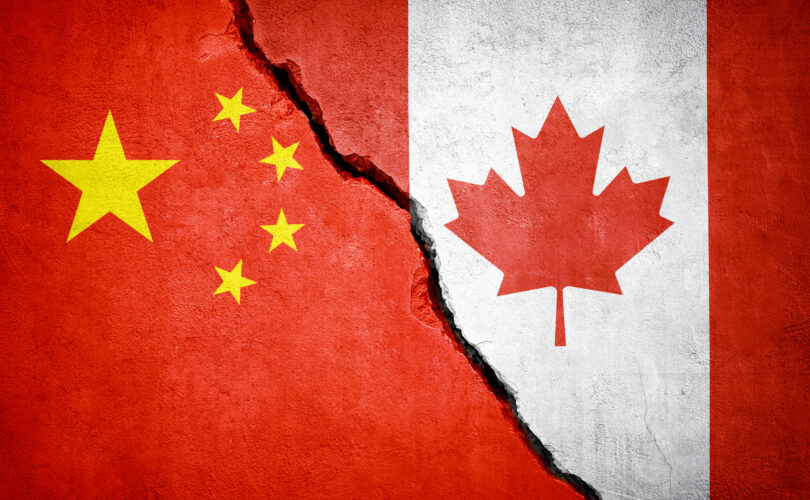
 International13 hours ago
International13 hours agoOttawa is still dodging the China interference threat
-

 Business11 hours ago
Business11 hours agoThere’s No Bias at CBC News, You Say? Well, OK…
-

 Automotive10 hours ago
Automotive10 hours agoCanada’s EV gamble is starting to backfire
-
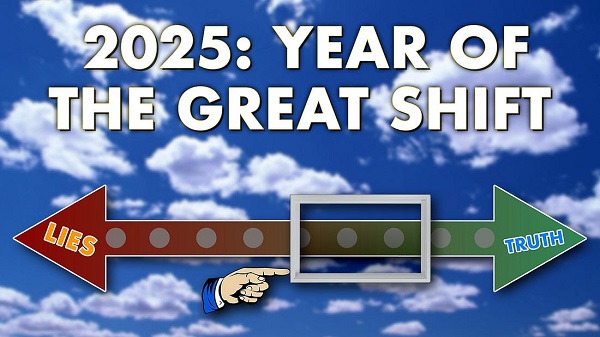
 International12 hours ago
International12 hours ago2025: The Year The Narrative Changed
-
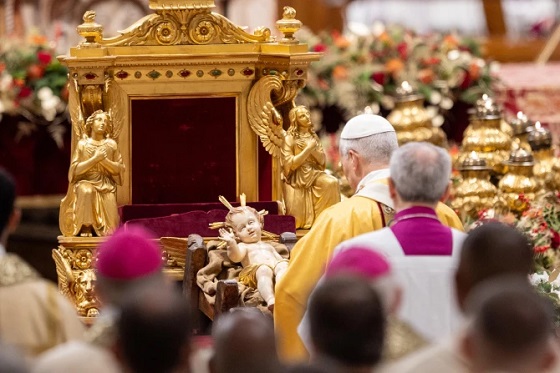
 Opinion2 days ago
Opinion2 days agoPope Leo XIV’s Christmas night homily
-

 armed forces2 days ago
armed forces2 days agoRemembering Afghanistan and the sacrifices of our military families
-
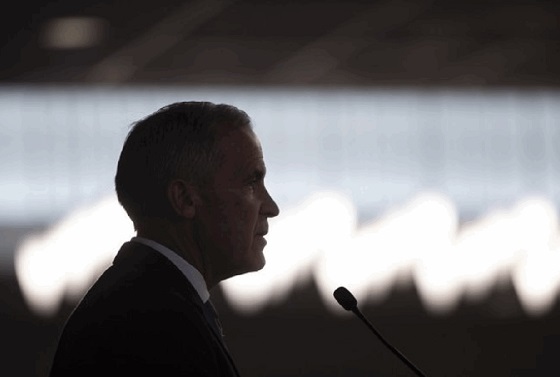
 Fraser Institute1 day ago
Fraser Institute1 day agoCarney government sowing seeds for corruption in Ottawa





